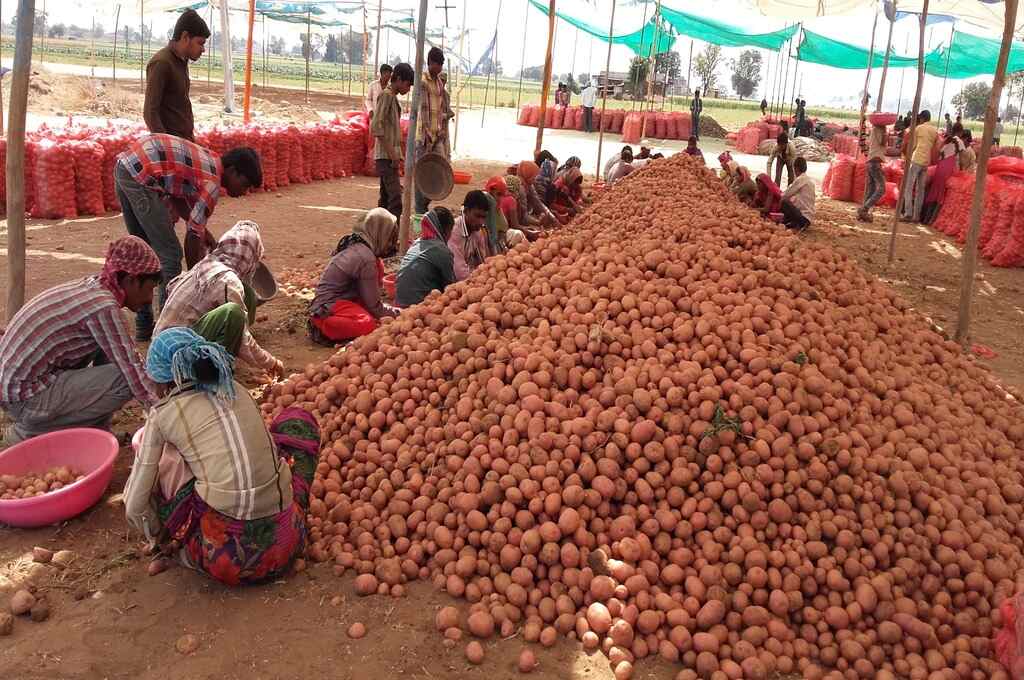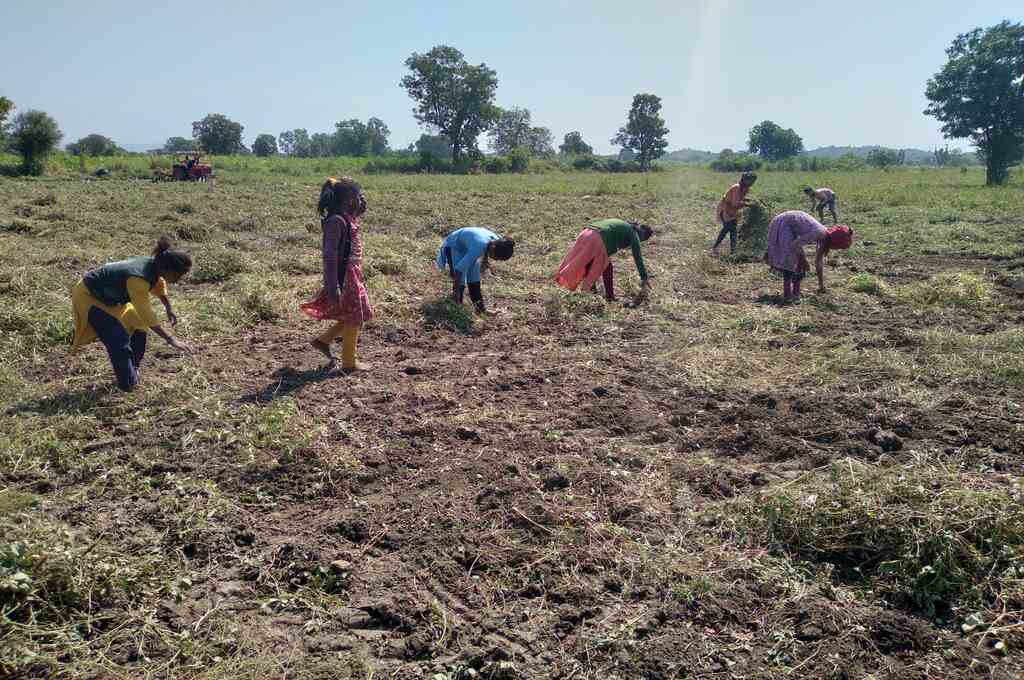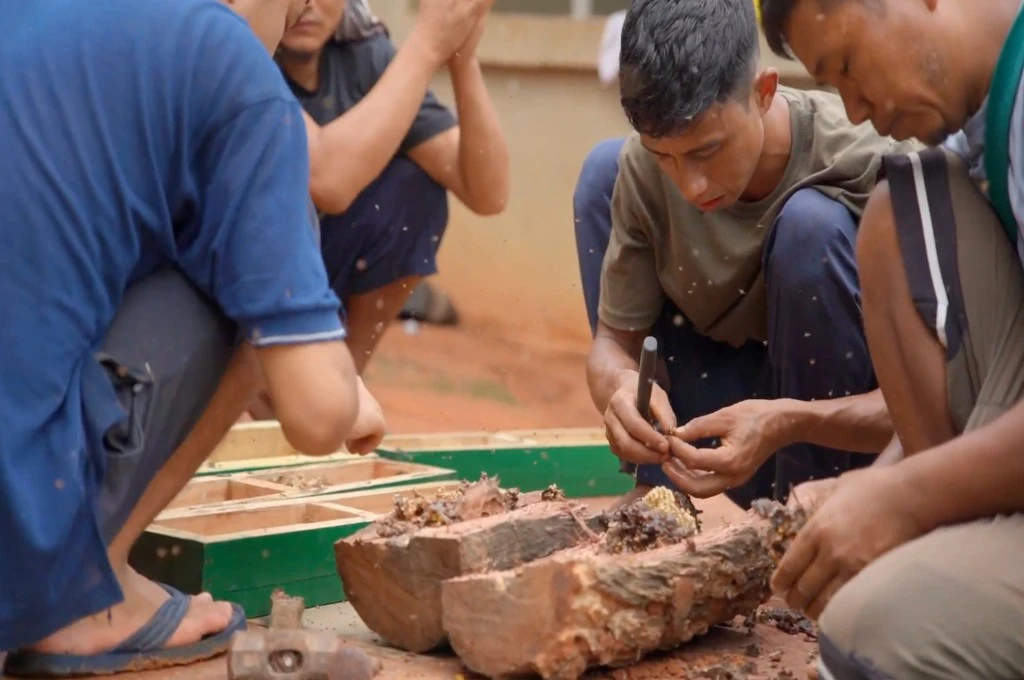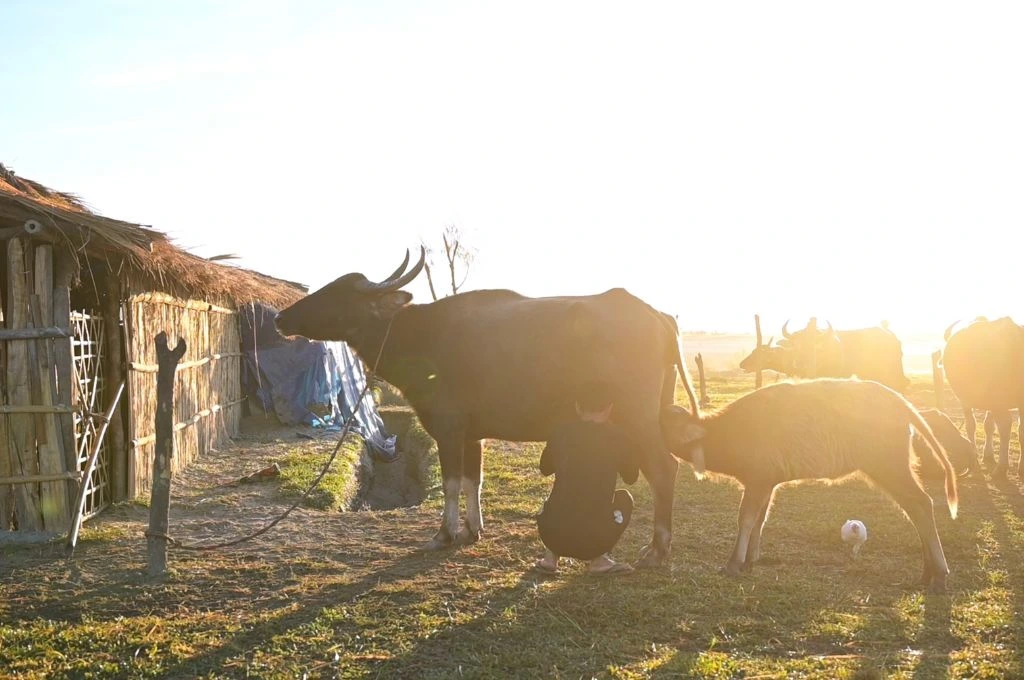During the COVID-19 pandemic, the entire country witnessed migrant labourers walking thousands of kilometres . However, migration is not confined to rural-to-urban movements; it also occurs between villages. Many labourers relocate from one village to another for agricultural work. And yet, despite being widespread, the challenges they face remain invisible to a great extent.
Most of the labourers migrating from one village to another in the Kotra block of Udaipur district, Rajasthan, belong to the Adivasi community. They are accustomed to engaging in farm work in the neighbouring villages as it allows them to reside with their families, even if it means crossing the state border for this purpose.
What does migrating from one village to another mean?
Kotra block marks the southernmost tip of South Rajasthan. It is primarily inhabited by the Bhil community, whose livelihood has traditionally depended on the forests. Earlier, members of the community would earn their income by gathering and selling tendu leaves (used for making beedis), bamboo, various medicinal plants, and other minor forest products. However, several laws enacted 30–40 years ago forced them to abandon their forest-based lifestyles. The implementation of the Wildlife (Protection) Act of 1972 and the establishment of the Phulwari ki Naal Sanctuary in Kotra in 1983 greatly impacted them. The enforcement of this law and the policies surrounding sanctuaries resulted in government authorities discontinuing the community’s access to forest resources.

Since Kotra is on the border of Rajasthan and Gujarat and the fields of Gujarat start just 10 kilometres from here, there is no significant difference in the language and culture of these two areas. Therefore, the residents of Kotra found it better to migrate to the villages of Gujarat instead of the cities because it would be more difficult for them to go and live in the cities.
Sabarkantha and Banaskantha are two districts of northern Gujarat adjoining Rajasthan. The largest producers of vegetables in Gujarat, these districts have been adopting new agricultural techniques. There are many large farmer settlements here, one of which comprises the Patels, a traditionally agricultural community. They have several acres of land and tend to require local labourers. These districts get water from the Dharoi dam built on the Sabarmati river, and hence three to four crops can be grown in this area in a year.
Additionally, due to rapid industrial development in Gujarat, local labourers—such as those belonging to the Thakurda community, SCs, and landless OBCs—who used to participate in agriculture are now less inclined to do so. Instead of working in the villages, they have started settling in the cities. Due to this migration, the farmers of Gujarat were in want of labourers—this need was fulfilled by the Adivasi labourers of Rajasthan.

Why is migration a compulsion for Adivasis?
1. Size of land: Kotra is a hilly area with very little agricultural land. Of the total available land, only 19 percent can be farmed. Due to a large number of uncultivated areas, the means of livelihood here are extremely limited. A dearth of basic facilities poses an additional problem.
2. Lack of opportunities: Those who had some land in the area found that their families were growing while the land available for farming was decreasing. Since it is not possible to support so many people on land alone, they would end up selling it. Apart from farming, they do not have any skills that they can use to go to the city and earn money, nor are there such opportunities and facilities nearby.

3. Immediate need for money: A lump sum amount is required for necessities such as marriage expenses, medical emergencies, or digging a well. To meet these pressing economic needs, individuals often find themselves compelled to migrate.
How do migrant labourers work?
There is a constant need for labourers in farm work. If a farmer hires a labourer on a daily wage basis, it is relatively more expensive because the labourer has to be paid every month. Moreover, if the crop suffers damage, the farmer faces losses. Therefore, instead of hiring daily labourers, the method of sharecropping has been adopted in this area. Sharecropping involves a sharecropper, locally known as a bhagiya. Under this arrangement, the labourer gets a portion of the produce from farming activities. For instance, if a farmer grows 120 quintals of wheat, the sharecropper would get 20 quintals—one-sixth of the total produce—as wages. Any advance money given by the farmer would be deducted from this share. If additional labourers are hired during the crop cycle, their payment would also be deducted from this one-sixth share.
Typically, the farmer and the labourer enter into a verbal contract at the beginning of the season. The farmer gives the labourer an advance of INR 15,000–20,000. Once the contract is confirmed, the labourer, along with his family, engages in farm work and stays there for the entire kharif (seeds are sown at the onset of monsoon) and sometimes rabi (seeds are sown during early winter) season. This could last from six months to a year.

What is the reality of labourers engaged in sharecropping?
When we think about land, we must consider it as a sum of six parts: the land itself, water, seeds, fertilisers, new technology, and labour. Farmers say that due to new technology, labourers have to work less and so this must be taken into account as well. In such a scenario, when labourers are easily available, they end up suffering the consequences.
1. Minimum wage: The minimum agricultural wage in Gujarat is INR 268. When workers engage in sharecropping, this wage reduces to approximately INR 100—a big loss for the worker.
2. Lack of clear laws: There is no law for sharecropping and so if there is a dispute between the employer and the labourer, it is very difficult to reach a just resolution. There is a provision for the payment of daily wages under the labour laws, but such a system has not been established for agricultural work. The result is that if an issue arises, labourers often do not receive payment and have to return home empty-handed. Moreover, when labourers seek employment, they are unable to engage in political or social activities.
3. Calculation for advance: Farmers pay the labourers in instalments instead of giving them the advance all at once. When the labourer first goes to see the field, everything from how many more labourers he will bring to how much advance the farmer will give him is decided. For example, if the total amount is INR 30,000, the farmer will pay INR 15,000 initially, followed by the second instalment on the festival of Rakhi in August. July and August are important months for farming. The sowing season commences in June, with primary tasks such as removal of weeds and spraying of insecticides taking place alongside crop cultivation till August. The farmer ensures to extract work equivalent to the advance he pays to the labourer. If there is a discord between the farmer and the labourer in the period that follows, the labourer is dismissed without being paid the second instalment. As a result, his entire year is wasted—securing alternative employment in the sharecropping system is unlikely because all the positions are usually already filled. Thus, the labourer faces prolonged unemployment, often leading to debt.
4. Additional labour: In agricultural work, there are instances where additional labourers are hired. The wages for these additional labourers typically come out of the sharecropper’s allocation. This practice is generally acknowledged and accepted by the sharecropper.
What are the advantages and disadvantages for farmers?
1. Cheap and socially vulnerable labour: The migration of labourers from one village to another provides farmers with access to cheap labour throughout the year. Because these labourers often come from different states, the policies and regulations of the farmer’s state may not apply to them. Additionally, the state government tends to overlook the rights and welfare of migrant labourers, resulting in their grievances being underreported. This is partly why farmers prefer hiring migrant labourers over locally based individuals who may possess greater political or social influence.
2. Desired crop, desired share: Adivasi labourers prefer coming to villages rather than going to cities as the work here is familiar to them. The farmers have understood this, and so they decide what share the labourers will get. In Banaskantha, where potato cultivation is common, farmers share up to one-tenth of the crop with the labourers because the crop brings in more profit.
3. Labour expenses: The labourer’s share is used to cover all labour costs. Approximately 50 percent of the farming expenses go towards labour, and the remaining 50 percent is allocated to various inputs such as seeds, water, medicines, and electricity. In sharecropping, the labourer’s share not only covers these expenses but also accounts for additional labour, ultimately boosting the farmer’s profit.
So far, the only disadvantage that has emerged for the farmers is that labourers have sometimes run away with the advance and not come to work. This has been seen in 2–3 percent of the cases till now. If a farmer loses both his money and labour, he has to find a new person to do the work.
According to an estimate, there are more than 90,000 farmers in just these two districts of Gujarat, and each of them has their own share of land and labour. When we think of agricultural labourers, we often picture daily wage workers. However, apart from them, there are 30,000–40,000 labourers engaged in sharecropping in Rajasthan and Gujarat. Despite their significant numbers, this population of labourers remains largely unseen and unrecognised.
—
Know more
- Watch a conversation with sharecroppers and farmers in Gujarat.
- Read this article to learn about how nonprofits can ensure safe migration for informal workers.




